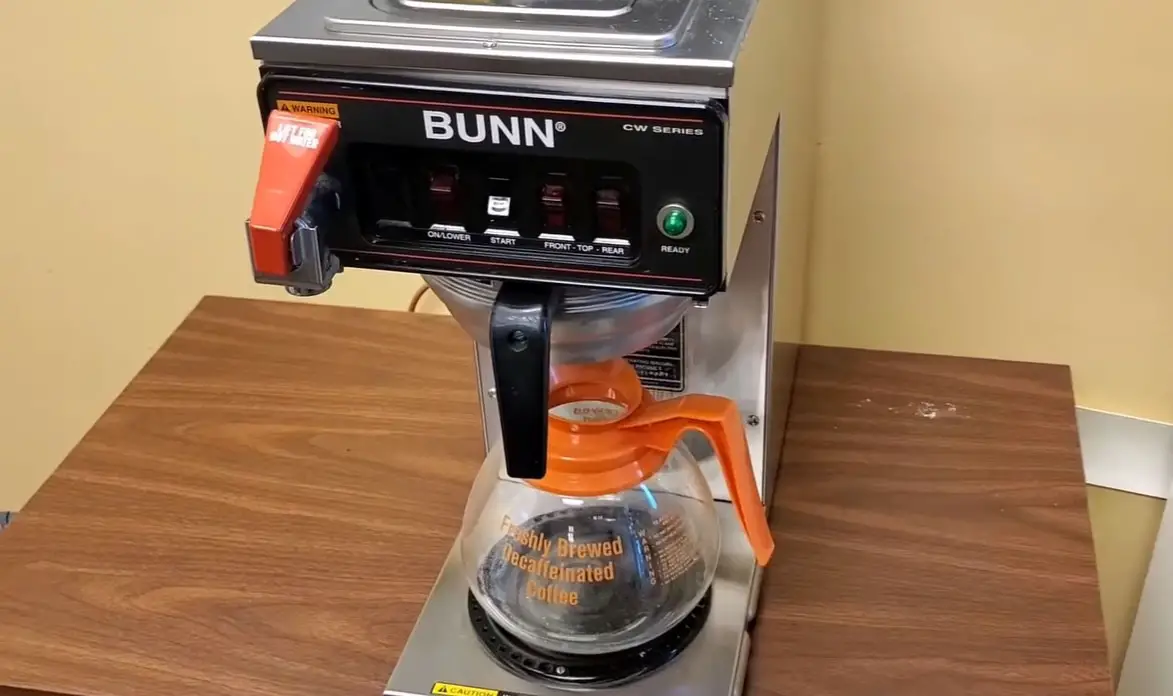Coffee is one of the most popular beverages in the world, and many people rely on their trusty coffee maker to start their day. However, with concerns about energy consumption and environmental impact on growth, it’s important to consider how much electricity our devices are using.
If you’re a coffee lover who owns a Bunn coffee maker, you might be wondering how much energy your machine is consuming on a daily basis. In this article, we will explore how much electricity does a Bunn coffee maker use. Plus tips on how to make your coffee routine more energy-efficient.
Electrical problems with Bunn coffee machines
A Bunn coffee maker does not require you to heat the water before each use, in contrast to other coffee makers. Instead, it will always have the perfect water temperature ready for you to start brewing. This is an ideal choice for a commercial setting such as a restaurant or coffee shop, where the several minutes it can take for a standard coffee pot to heat up can sometimes be crucial when it comes to serving customers on time.
One of the primary reasons the Bunn Coffee Maker is so well-liked by coffee shop operators and those who like immediate hot coffee in the morning without having to wait for the machine to heat the water is its quicker brew time.
However, some people may worry that the Bunn coffee machine will incur huge electricity bills, due to the energy they use to make sure hot water is available all the time. The good news is that this is not a big concern; in fact, a Bunn coffee machine will use a surprisingly low amount of electricity and you’ll hardly notice a difference in your electricity bills.
How much electricity does a Bunn coffee maker use?
Depending on the model you choose, the precise amount of power your Bunn coffee maker will require will change. It makes sense that a larger machine, like a machine that can create twelve cups of coffee at once, will use more energy than a smaller one that just brews one or two cups.
Most Bunn coffee machine owners claim that their machine uses about 1.1 KW of power daily. Your annual power bill will only increase by about £24–48, or $2–4 each month, as a result of this.
How to test the power consumption of the machine
Once you have a Bunn coffee maker and have learned how to operate it and which coffee works best with that as well, you may also be interested in learning more about how much energy it uses. The good news is that you can test this and learn how much power your coffee maker is using in a simple and fast way. You’ll need a Kill-a-Watt electricity monitor, which you can get on Amazon or at most hardware stores. Then, connect the coffee maker to it by plugging the gadget into the Bunn’s socket. The gadget will tell the daily power use of the coffee maker if it is left plugged in for a day.
How Can Your Bunn Reduce Energy Consumption
You probably don’t need to alter your use habits if you’re satisfied with how much power your Bunn coffee maker consumes. There are a few things you can do, though, if you want to cut back on the energy your house needs and are wondering whether there is anything you can do to cut back on the electricity your Bunn coffee maker requires.
If you don’t use your Bunn machine again that day and unplug it once you’re done making your coffee, you may easily lower the amount of energy it uses. If you just ever drink coffee in the morning, this can be helpful since if you wait until the next morning to use the coffeemaker again, you’ll simply be squandering the energy needed to keep your water hot all day. If you want fresh, instantly hot coffee in the morning, plug it back in before you go to bed.
The warming plate can also be turned off to reduce the amount of power needed if you’re not using it. Some other things you can do to reduce the energy use of your Bunn coffee maker include:
Deep clean
Maintaining your Bunn will not only keep it working more smoothly for longer, but it can also help you spend less energy. To prevent damage and make sure it is operating at its most effective level, you should give your Bunn coffee machine a thorough cleaning at least once every three months, as you do with other coffee makers. Cleaning the machine removes any contaminants in the water source and cleans out any mineral residue that could have caused the machine to use more energy to heat the water.
Use smart plugs
The best feature of smart plugs is that you can use them to remotely manage practically any electronic appliance or equipment in your home. Smart plugs are gaining popularity on a constant basis. To operate a smart plug with your voice, you may link it to an app on your smartphone or a smart speaker like Amazon Alexa. Connect a smart plug to your Bunn coffee maker before inserting the smart plug into a wall socket. Once it’s connected, you should be able to remotely turn the plug on and off.
Moreover, the Bunn coffee maker has a timer that can be set to turn on and off at a specific time. This feature is useful at night. For instance, if you just use your Bunn coffee maker in the morning and switch it off the rest of the day to conserve energy.
Read More: How to clean a coffee maker without vinegar
